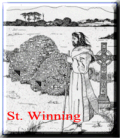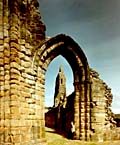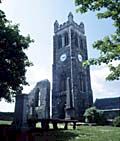 |
Early
Scottish and Kilwinning History. From the Ice Age
Onwards. |
 |
A water driven flour mill dating back to 1640. Situated in a secluded
hollow just off the main Glasgow to Kilwinning Road (the A737) or only 25
minutes walk from Kilwinning Town Centre. |
 |
Kilwinning Abbey
Founded between 1140 and 1191 by the De Morville family. The abbey was attacked in 1559 because any worship
contrary to the new Protestant confession of faith was banned and one year later the abbey was cast down by the
Earls of Arran, Argyll and Glencairn.
A Clock Tower Heritage Centre and the much later Abbey
Church occupy this Kilwinning Town Centre site now. |
 |
Clock Tower Heritage Centre
After an extensive refurbishment programme during 1993-95, the tower is now open to visitors. It is virtually 2 minutes from
the town centre and is well signposted. |
 |
Mother Lodge No.0
The Mother Lodge of Kilwinning was founded around the time the Abbey was
being built and is the oldest in Scotland.
King James I of Scotland patronised it and presided for a time as Grand Master. |
